On May 15, villagers of Pantang in Guangzhou's Liwan gathered on the banks of Litchi Bay and held the dragon boat awakening ceremony, marking the start of the "Dragon Boat" season of 2024.
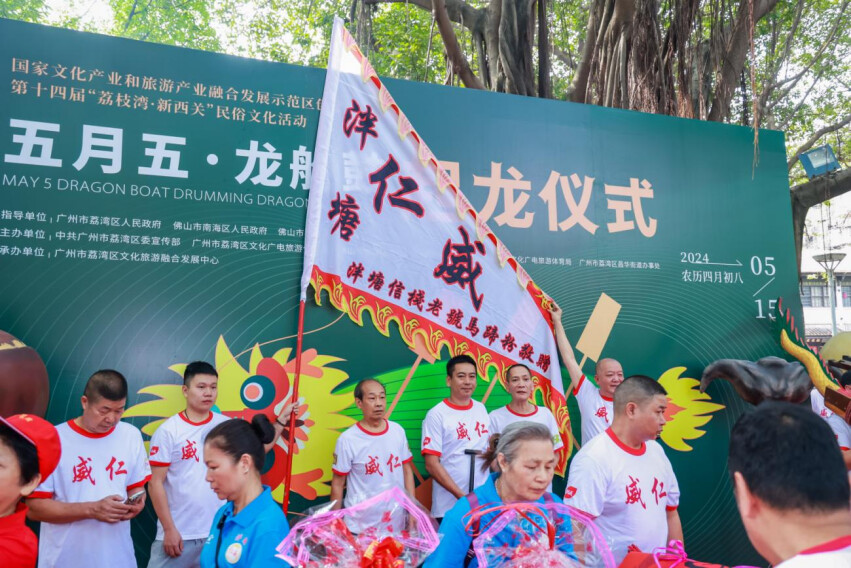
Awakeing ceremony marks the start of the Dragon Boat Festival
Every year, on the eighth day of the fourth lunar month, the villagers of Pantang in Liwan District retrieve the dragon boats from the water, awakening them from a year-long slumber and preparing them for the annual dragon boat festival.
The dragon awakening ceremony includes rituals such as blessing, lifting the dragon boat, cleaning, decorating the dragon boat, and launching the dragon boat into the water. Through these rituals, people pray for favorable weather, peace, and prosperity for the country and its people.
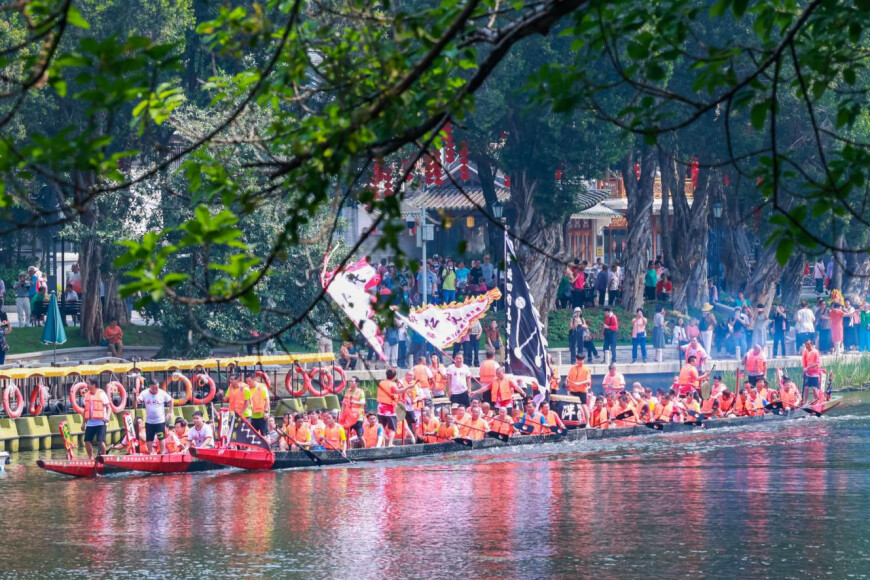
Villagers of Pantang carried colorful flags, zongzi (sticky rice dumplings), fruits, sacrificial offerings, dragon boat drums, and tools to Liwan Lake. Along the way, they beat the drums of the dragon boat, creating a grand atmosphere.
After performing the traditional worship ceremony, they proceeded to their respective "dragon boat dens," eagerly preparing to showcase their skills and welcome back the dragon boats after a year's absence.

Then, the long firecrackers were set off and the auspicious time arrived. Dozens of sturdy young men from Pantang, barefoot, entered the lakebed of Yucui Lake, ready to begin the traditional dragon-inviting ceremony.
Each dragon boat required 30 to 40 young men to "awaken" it. They first cleared the accumulated sand and mud from the hull, then slowly scraped away the mud from the bottom of the boat, before finally working together to lift the dragon boat out of the water.
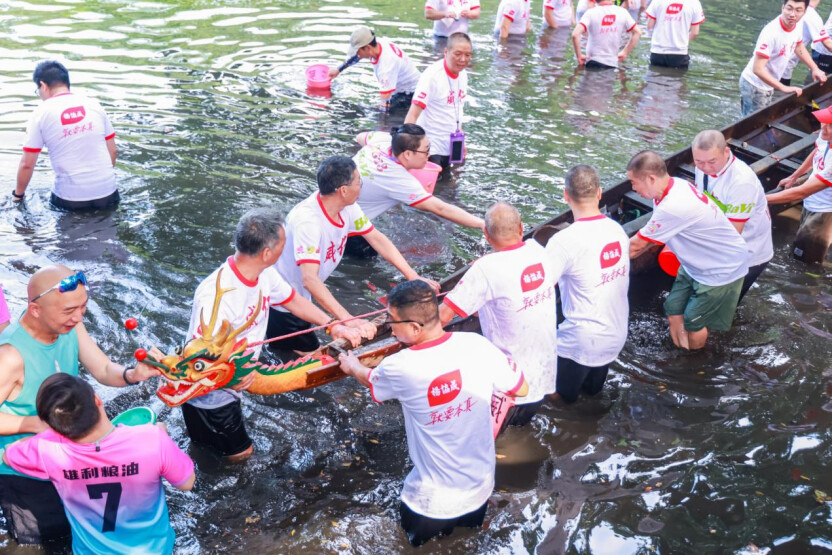
With a concerted effort, they lifted the dragon boat and simultaneously scooped out water and cleared the silt using buckets and basins, until the dragon boat gradually floated to the surface.
The awakening ceremony for the Pantang Wuyue is scheduled for May 18, where three traditional dragons will be awakened, along with two 12-person fiberglass dragons.
After the dragon awakening ceremony, villagers begin the meticulous task of cleaning the dragon boats, using tools such as rattan, cloth brushes, and others to remove dirt and debris.
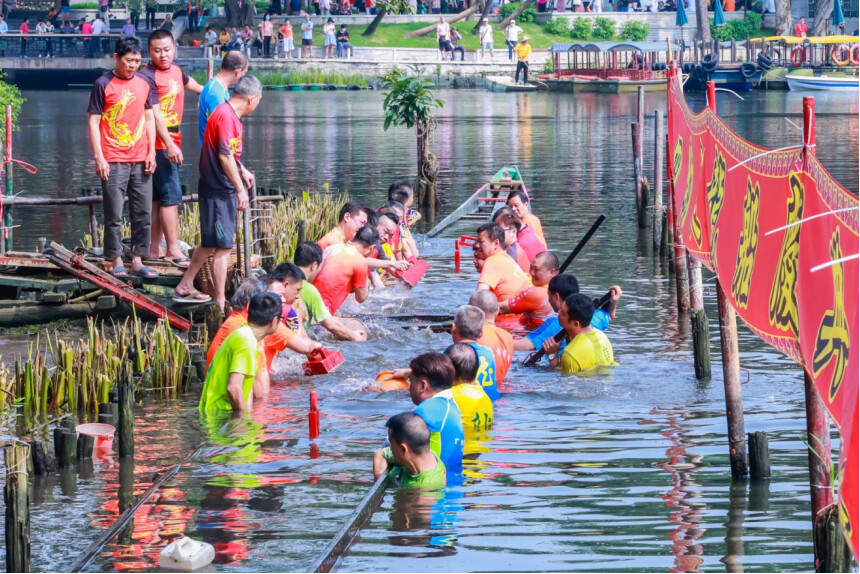
Between the dragon awakening and the Dragon Boat Festival, there are several maintenance procedures for the dragon boats. Firstly, the wooden hull needs to be naturally dried to an appropriate degree, while checking for cracks and damage in the hull and promptly repairing them. Then, experienced villagers re-tie the dragon ribs to strengthen the boat's structure. Finally, the dragon boat is oiled and painted to ensure the durability of the wood.
Once these procedures are completed, according to the tradition of Pantang dragon boats, gold and red patterns are painted on the hull, giving the dragon boat a fresh appearance.
"Hidden" dragon boat star out of the water
The "dragon boat dens" in Pantang village are said to house the Pantang old dragon, who is over four hundred years old. Crafted from Kundian wood, the dragon boats are preserved in the silt at the bottom of the lake, remaining sturdy and enduring.
The Renwei dragon is 38.3 meters long, approximately 1.2 meters wide, and weighs nearly 3.5 tons. It is made from Kundian wood sourced from Brunei and Borneo, Malaysia.
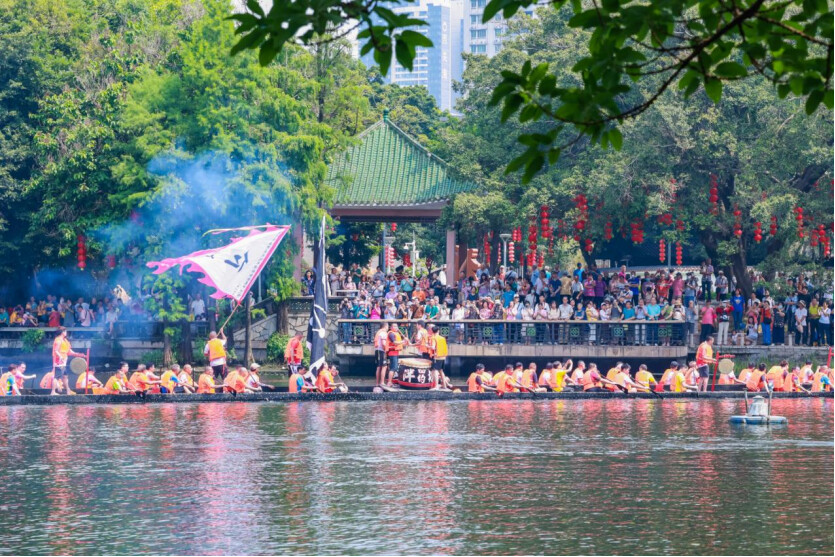
The dragon boat is adorned with a red-bordered green base with golden characters. Both the dragon head and tail plates bear the inscription "Renwei." The boat is equipped with one black-and-white Luo umbrella each, a seven-star flag, 68 rowing seats, four helm positions at the bow and stern (two each), four flag and umbrella holders on the dragon's face, one deity attendant, two drummers, four frame-gunners, and two flag-wavers at the bow and stern, accommodating a total of 89 members.
Reporter | Clarice
Video | Clarice
Editor | Will, James
Photo provided to GDToday
















